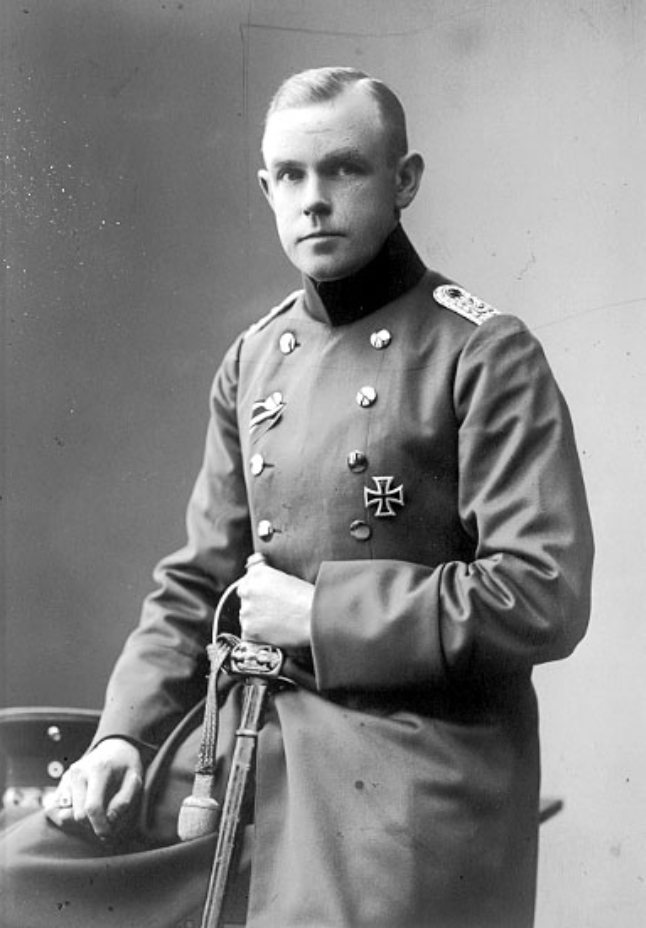In my research I follow up Swedes in the Great War, especially those who fell and are buried at the Western Front. In my database I have Swedish born soldiers who fought for different nations, such as Canada, UK, Australia, New Zealand, France, Germany and North America.
I read a lot of material and I especially like to find text in diaries from Swedes who participated in the battles. A quick analyze shows that it was often the Swedish officers notes who became books which they often wrote when they came home, after having survived the War.
In some notes I can read information about where and when they fought in a specific region, and it is very interesting but at the same time a great challenge to figure out if it could have been like that, that they fought against eachother, from a short or long distance, or met eachother. I know it will be very hard to find out, but it is highly likely that they of course where in the same area, where some of them paid the ultimate price, their lifes.
I will write more about this subject in an upcoming article, but will give you an example in this blog post.
Carl Belfrage (Karl Mauritz) was born in Mölndal (Fässberg) parish April 28, 1887. He was raised by his mother Jenny Elfrida Gustafva Lagerlöf and his father Knut Arcadius Belfrage, together with his twin brother George Knut and their older brother Nils Gustaf.
Carl took his officer exam in December 19, 1908. At new years day in 1908 he became an “Underlötjnant” (sub lieutenant) and at new years day in 1914 he bacame a lieutenant.
When Swedish officers applied for going to War for another country, they were in all cases denied to do that, so they had to resign as officers. Carl did that June 3, 1915, and became a lieutenant in 162nd Prussian infantry regiment.

He participated in the War at the Western Front in following battles:
- Roye-Noyon July 7, 1915 to September 28, 1915
- Autumn battle between La Bassé and Arras in 1915.
- Giessler hight east of Souchez in February 21, 1916.
- Fightings at Givenchy en Gohelle May 21, 1916 to June 2, 1916.
- Battle of the Somme July 20, 1916 to August 21, 1916 and September 25, 1916 to October 7, 1916.
- Fightings at the Yser, October 18, 1916 to February 5, 1917.
- Siegfried front at Ribe-court in Artois April 24, 1917 to May 15, 1917
- Artois in June 5, 1917 to August 9, 1917 and September 17, 1917 to September 29, 1917
- Arras and Albert April 1, 1918 to April 20, 1918
- Hebuterne July 15, 1918 to July 28, 1918
- Monchy and Bapaume August 21, 1918 to September 2, 1918.
- West of Cambrai September 3, 1918 to September 6, 1918
- Armentieres and Lens September 7, 1918 to October 11, 1918
- Antwerpen-Maas stellung October 12, 1918 to November 4, 1918.
- Went back through the German area to Germany between November 12, 1918 to December 16, 1918.
Carl became a Captain October 5, 1916. He received the Iron Cross, 1st and 2nd Class, and he left the German Army in March 31, 1920.
In the book about “Swedes in War”, (Svenskar i Krig) by the Swedish Historians Lars Gyllenhaal and Lennart Westberg, there is a short story from one of Carl’s colleague, the Norwegian officer Lyder Ramstad, when they were out on a patrol in no mans land around Ypres:
“We, as the englishmen, often did patrols. One night we heard only some meters away and small talk from the other side. My comrade grabbed me in the arm and said; – It sounds like when you and Belfrage speaks to eachother! It was like that, the talk was made in perfect Swedish. (Norweigian and Swedes understand eachothers language) We crawled around them and shouted – Hands Up! The three men immidiately gave up. The were very surprised when I talked to them in Norwegian. When we came back to our lines , and Belfrage talked to them in Swedish, they looked very surprised. They were three sailors who fought for the Brits (It doesn’t tell for which commonwealth country). Belfrage decided to help them back to Sweden”
Belfrage wrote his own diaries and they have been made into a book by one of his relatives, Bengt Belfrage, and is called “War memories – The hell on the Western Front” (Vanvettet på Västfronten).
As mentioned above, I will try to compile more analyzes and stories from other sources into a larger article, which I probably will send to the Great War Group.
